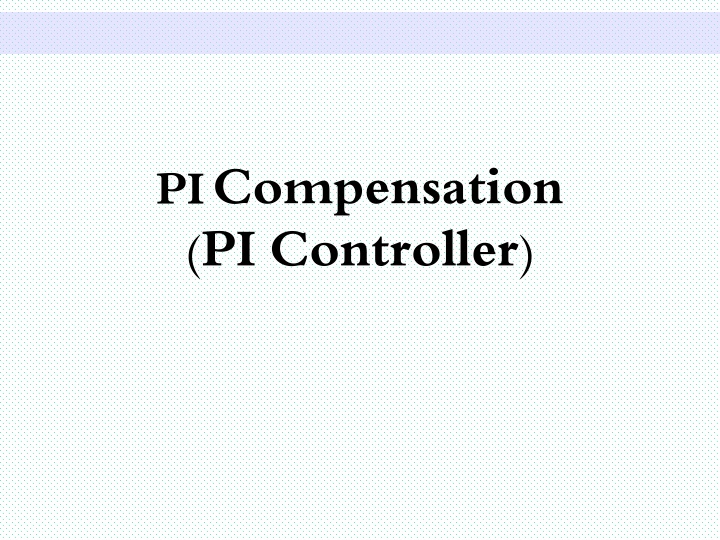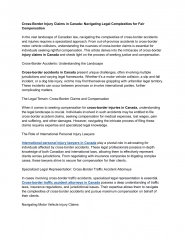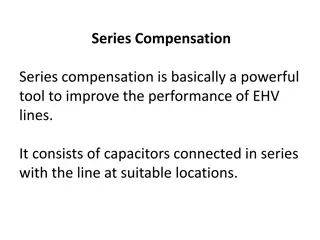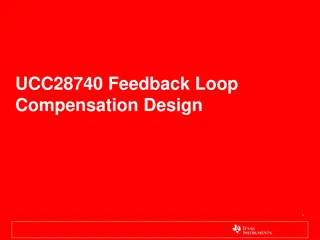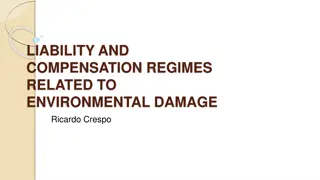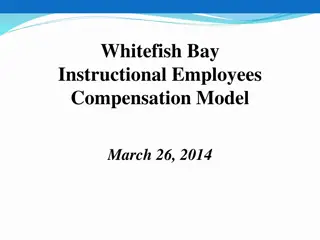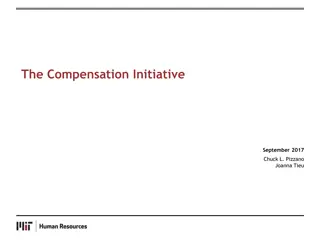Understanding PI Compensation and Control in Systems
PI compensation, integral control, transient response improvement, controller design procedures, remarks on cascade compensation, pole-zero diagram utilization, and proof of controller angles are discussed in this technical content.
Download Presentation

Please find below an Image/Link to download the presentation.
The content on the website is provided AS IS for your information and personal use only. It may not be sold, licensed, or shared on other websites without obtaining consent from the author.If you encounter any issues during the download, it is possible that the publisher has removed the file from their server.
You are allowed to download the files provided on this website for personal or commercial use, subject to the condition that they are used lawfully. All files are the property of their respective owners.
The content on the website is provided AS IS for your information and personal use only. It may not be sold, licensed, or shared on other websites without obtaining consent from the author.
E N D
Presentation Transcript
PICompensation (PI Controller)
PI Control Integral control to improve e( ), (increases type by one) worse transient response or instability. Add proportional control controller has a pole and a zero. Transfer function of proportional-plus-integral (PI) controller + K s a = + = i ( ) C s K K p p s s = a K K i p
PI Remarks Used in cascade compensation (integral term in the feedback path is equivalent to a differentiator in the forward path) PI design for a plant transfer function G(s) = PD design of G(s)/ s. A better design is often possible by "almost canceling" the controller zero and the controller pole (negligible effect on time response).
Procedure 5.3 1. Design a proportional controller for the system to meet the transient response specifications, i.e. place the dominant closed-loop system poles at scl= n j d. Add a PI controller with the zero location ( a) = small angle ( 3 5 ). Tune the gain of the system to move the closed-loop pole closer to scl. 2. 3. = = a or a n n 10 + 2 1 tan( )
Comments Use PI control only if P-control meets the transient response but not the steady-state error specifications. Otherwise, use another control. Use pole-zero diagram to prove zero location formula.
Pole-zero Diagram of PI Controller j scl d p = cl s ( ) a = + scl z a n
Proof Controller angle at scl ( ) ( ) = = 180 180 z p p z 2 ( ) 1 = = tan 180 d From Figure p n 2 ( ) 1 = = tan 180 d z a x n a = x n
Proof (Cont.) ( ) tan ( ) ( ) B tan + 1 tan tan A B ( ) = Trig. identity tan A B ( ) A x 2 2 1 1 x 2 2 1 x ( ) tan = = 1 1 + 1 ( ) x 1 x = Solve for x ( ) + 2 1 tan x = ( a/ n) Multiplying by n gives a.
Controller Angle at scl (< 3 ) vs. 3.5 = n = 10 x a 3 2 1 = 1 tan 2.5 2 10 2 about 3 1.5 1 0.5 0.1 0.2 0.3 0.4 0.5 0.6 0.7 0.8 0.9
Example 5.6 Design a controller for the position control system to perfectly track a ramp input with a dominant pair with = 0.7 & n =4 rad/s. 1 = G s ( ) + s s ( 10 )
Solution 1 = i( ) G s + 2 ( 10 ) s s Procedure 5.1 with modified transfer function. Unstable for all gains (see root locus plot). Controller must provide an angle 249 at the desired closed-loop pole location. Zero at 1.732. Cursor at desired pole location on compensated system RL gives a gain of about 40.6.
RL of System With Integrator Root Locus 6 5 4 Imaginary Axis 3 0.7 2 1 4 0 -10 -8 -6 -4 -2 0 Real Axis
Analytical Design Closed-loop characteristic polynomial + + + = + + + 3 2 2 2 n 10 ( )( 2 ) s s Ks Kz s s + s n = + 2 ( + + + 3 2 2 n 2 n ( 2 ) ) s s s n n = = = 10 2 10 7 . 0 ( 2 ) 4 )( 4 . 4 n 7 . 0 ( 2 = + = + = 2 ( n ) 4 ) 4 . 4 )( 4 40 64 . K n 2 n 2 4 . 4 4 = = . 1 = 732 a 40 64 . K Values obtained earlier, approximately.
MATLAB scl = 4*exp(j*(pi acos( 0.7)) ) scl = -2.8000 + 2.8566i theta = pi + angle( polyval( [ 1, 10, 0, 0], scl ) ) theta = 1.9285 a = 4*sqrt(1-.7^2)/tan(theta)+ 4*.7 a = 1.7323 k = abs(polyval( [ 1, 10, 0,0], scl )/ polyval([1,a], scl) ) k = 40.6400
Design I Results Closed-loop transfer function for Design I + 4064 10 . ( 1732 . ) 6928 s 4064 = cl( ) G s + + + 3 2 . . s s s + + 4064 . . )( 44 ( 1732 56 . ) s 2 = + + ( . 16 ) s s s Zero close to the closed-loop poles excessive PO (see step response together with the response for a later design: Design II).
Step Response of PI-compensated System Design I (dotted), Design II (solid).
Design II: Procedure 5.3 = 0.7, K 51.02 & n = 7.143 rad/s. (acceptable design) zero location n a . 7 143 = = 5 . 0 + 7 . 0 1 . 0 49 tan( 3 ) + 2 1 tan( ) Closed-loop transfer function s s s + + 10 + + 9441 50 ( . ) 05 50 50 ( + . ) 05 s = = cl( ) G s + + + 3 2 2 25 ( 0559 . )( . 44.7225 ) s s s s Gain slightly reduced to improve response. Dominant poles 0.7, n= 6.6875 rad/s Time response for Designs I and II PO for Design II (almost pole-zero cancellation) << Design I (II better)
